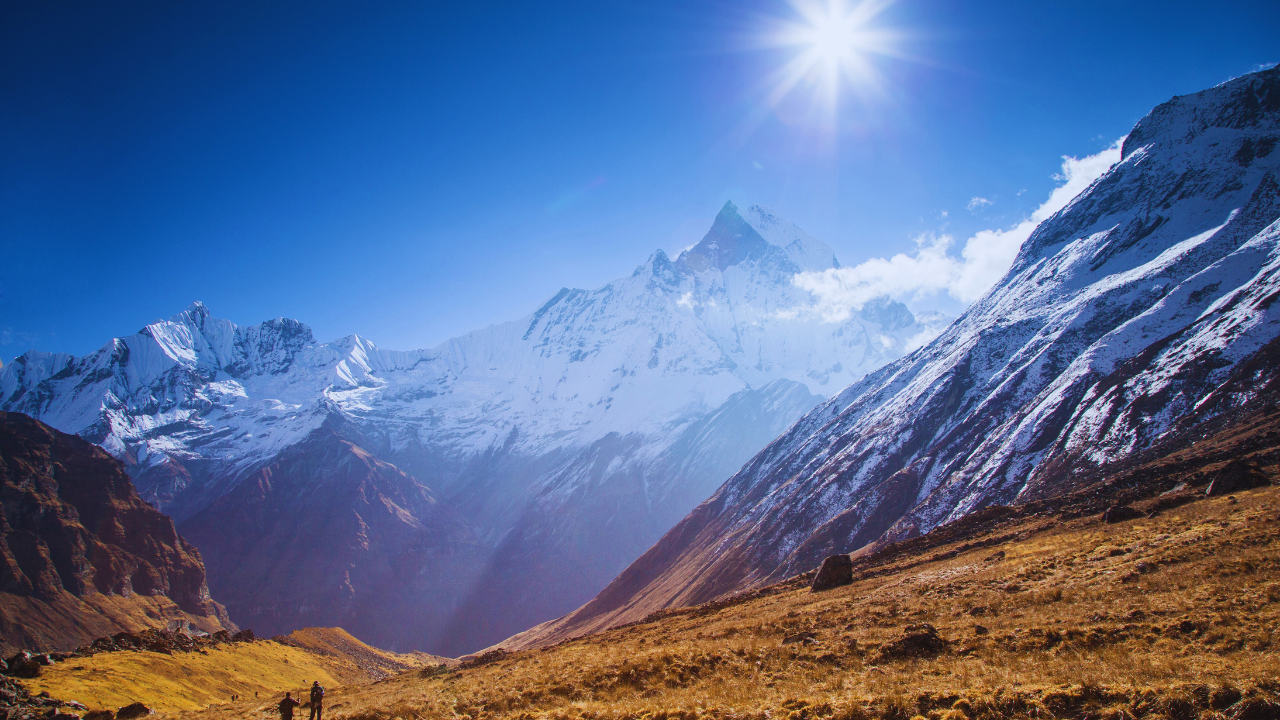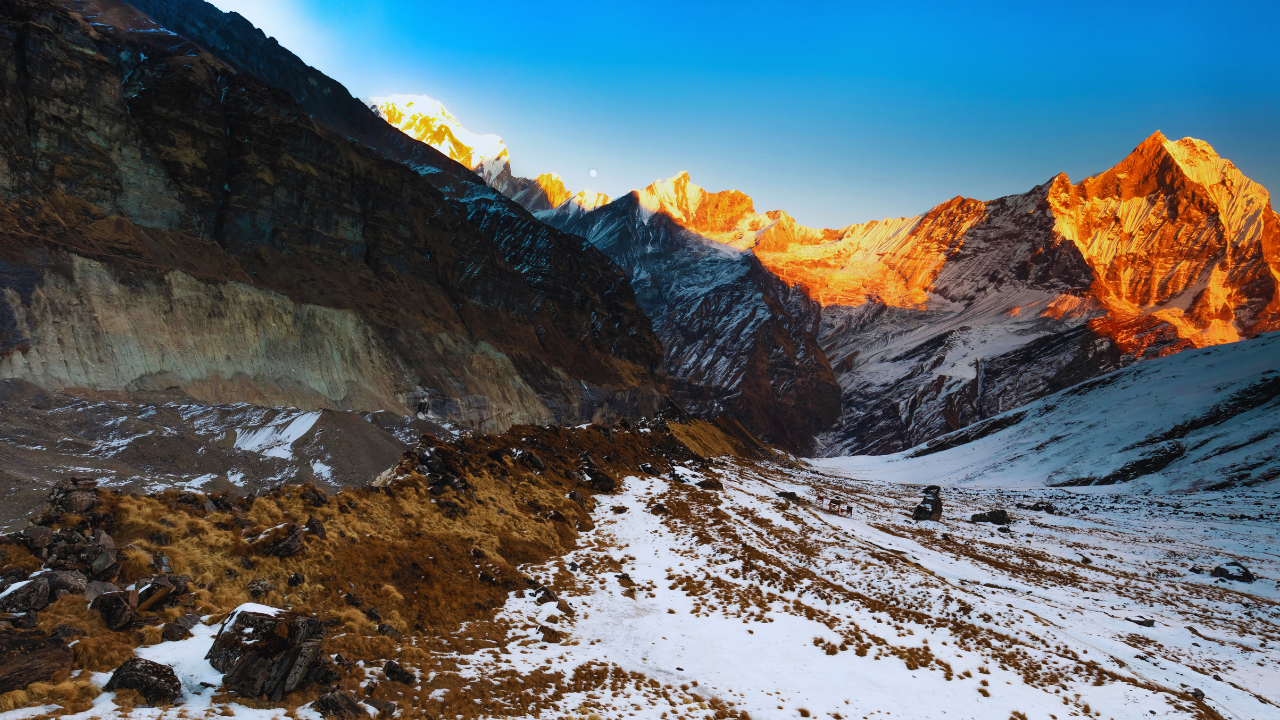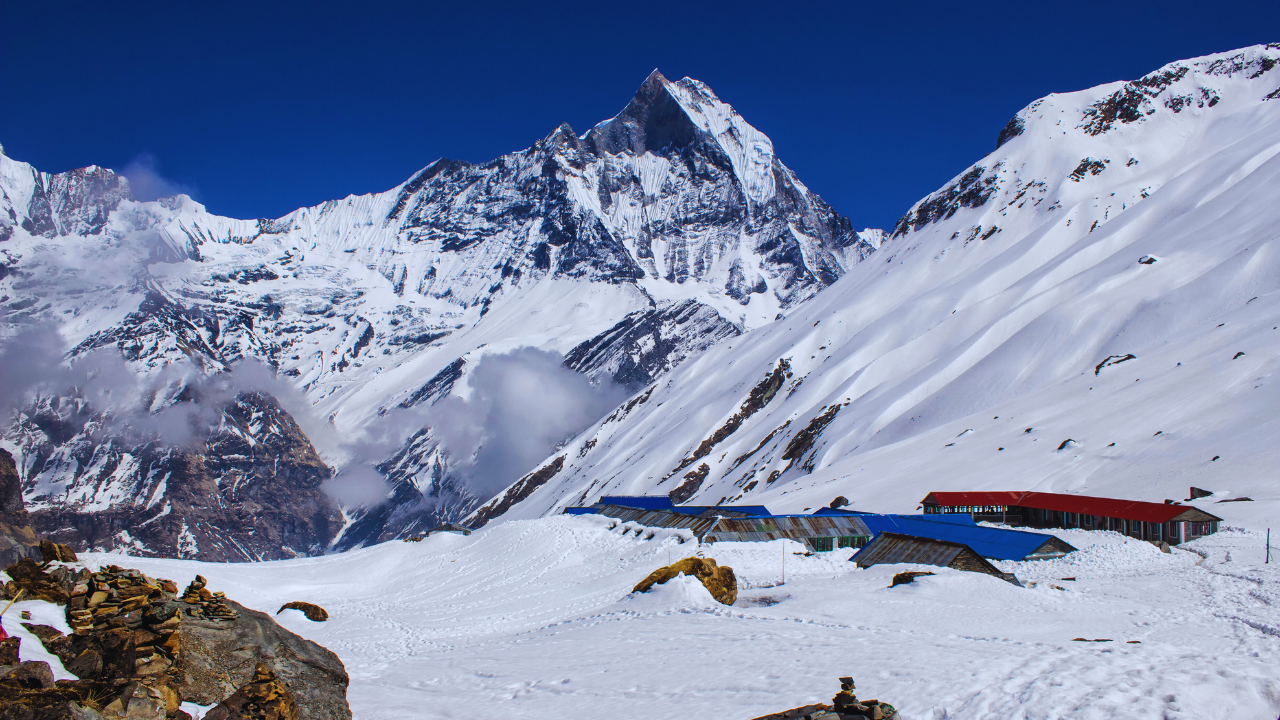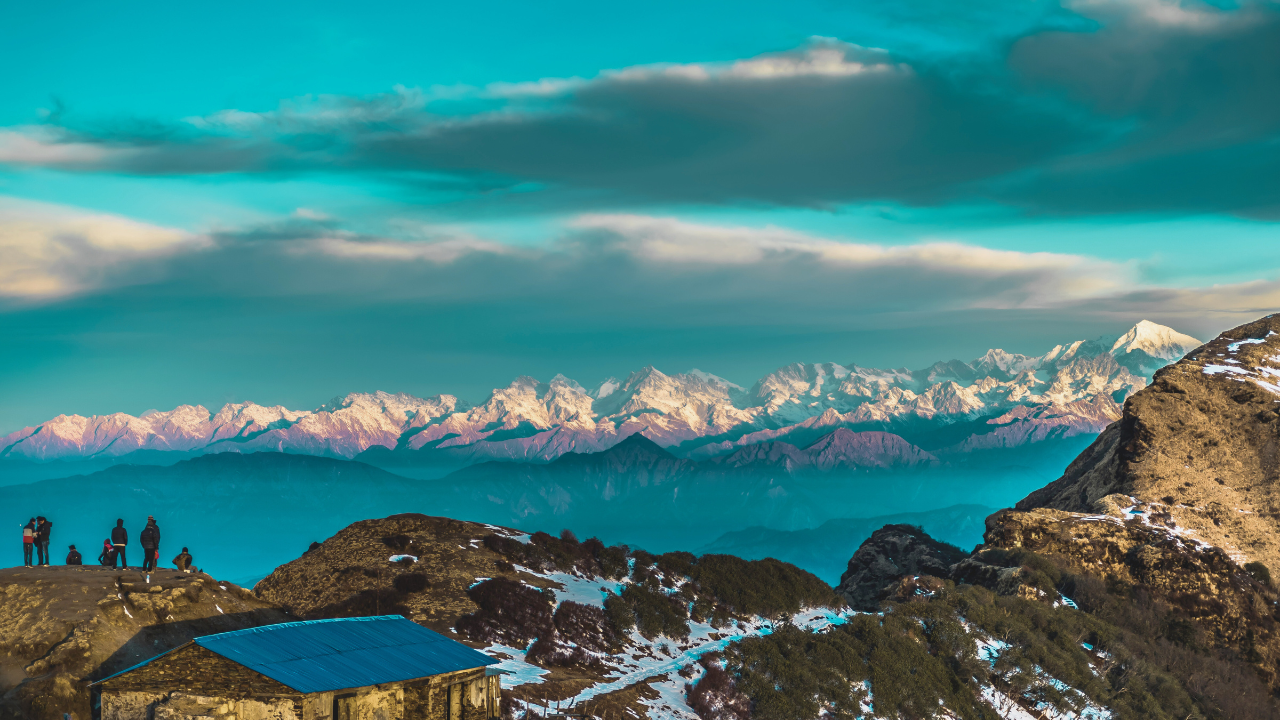The rugged mountain sides of Nepal are home to unique forests of Rhododendron flowers. Here, honey bees collect nectar and pollen to make honey. They fly between the pink and purple blossoms gathering ingredients for their prized product.
Throughout spring, local people known as honey hunters venture steep trails to harvest honey from the bees' hives. They have done this work for generations, following skills passed down from their ancestors. The honey hunters climb slowly and carefully up cliff faces to reach the tree-line forests high in the mountains.
Their target is the honeycomb, full of golden honey. But they also protect the important role of pollinator bees. The hunters use smoke to calm the bees rather than harm them, since bees are crucial to the mountain ecosystem and food supply. Each cluster of honeycomb collected provides nutrition, as well as keeping traditions alive in remote village communities.
The harvest requires bravery and mountain skills to tread narrow paths at dizzying heights. It's not just a job but an honored cultural practice. Selling the honey also supports families living in rural areas with few other income sources.
Honey produced in Nepal's Himalayan mountains has distinctive qualities due to the wide variety of flowers bees collect pollen from. Over 100 flower species high in the mountains provide nectar for bees. In the early season, bees visit rhododendron flowers which bloom in pale colors similar to vanilla.
Later in the summer, bees gather pollen from a darker selection of flowers including oak, chestnut and birch trees growing in the forests. The specific blend of flowers changes between different valleys and years depending on what is blooming abundantly.
Some honeys have a lighter color and flavor profile where rhododendrons are predominant, like in the Langtang region. Honey from other areas takes on characteristics reflecting the local botanicals. For example, honey from the Fishtail area has notes of sweet smoke and spices relating to their forest growth.
Through their pollination efforts across diverse terrain, bees impart a complex tea-like flavor profile to the golden honey. Local honey producers further enhance these natural products using time-honored techniques passed down through generations. This partnership between humans, bees and environment results in prized honey cherished worldwide.
Each dawn, skilled honey hunters head into the steep mountain cliffs to gather honey. They have practiced this work for many generations and know the terrain well.
To climb safely, the hunters tie ropes around their wrists and feet for stability. Wooden poles tied together help them ascend the rocky ridges. Experience allows them to navigate tricky spots.
Near beehives, they gently waft smoke from leaves to calm the busy bees without harming hives. Carved boxes and bamboo poles help remove only outer honeycomb layers, letting bees keep living there.
Loaded with honeycomb chunks, hunters lower the bounty down the ropes to others below. They then carry full baskets back to villages on their heads.
Back home, villagers extract honey through basic filtering for drinking or making local wines.
Throughout, the hunters are careful of the bees, forests and mountain communities who rely on the honey. Their skilled work passes down respect for the land and hope that future generations can safely enjoy this job and landscape too. It takes dedication to keep harvesting honey in such steep, difficult places.
While most mountain honey is mild, some stand out from the crowd. Certain honeys in Nepal carry chemical properties that can alter your state of mind - for better or worse.
The most famous is honey made by bees feeding on rhododendron nectar in the Himalayas. It contains grayanotoxin, which in large doses can be poisonous, but in small amounts it's quite a trip.
Locals enjoy this "mad honey" during festivals to lift their spirits. As long as they consume just a teaspoon or two, the effects are pleasant - bursting into laughter, feeling stress melt away. It heightens their mood for celebrating together.
However, moderation is key. Experts warn that too much can ruin your evening with a hangover or worse. Elders educate people on properly enjoying this honey's unique properties without overdoing it.
The Gurung honey hunters of Nepal have proudly carried on the tradition of honey collection for generations. As hardy mountain people, they are skilled at braving steep cliff sides that would frighten many others.
With careful techniques, these honey hunters tend to the bees and harvest comb without harming the vital pollinators. Their practices have supported both livelihoods and ecosystems in the high Himalayan slopes.
Sadly the number of honey hunters has been dwindling as more and more youths are discouraged from the danger and pain. Also the hunters are not compensated fairly for their efforts and since honey hunting is a seasonal affair, there are few profits. While tourism in those areas have provided some relief, most people are still unaware about the hazards involved. With awareness and proper management, this dying art can be preserved and promoted.
You can book honey hunting tour with doko tours, one of the best nepali travel agecny in australia















































Comments